given one directory with 15 images of same size
using PIL (pillow), I ended up with:
from PIL import Image
import os
path_to_file ='tiff-files'
images = []
for i in os.listdir(path_to_file):
with Image.open(path_to_file+'/'+i) as im:
images.append(im.copy())
new_image = Image.new(images[0].mode, (images[0].size[0]*3,images[0].size[1]*5))
new_image.paste(images[0])
new_image.paste(images[1],(images[0].size[0]*1,0))
new_image.paste(images[2],(images[0].size[0]*2,0))
new_image.paste(images[3],(0,images[0].size[1]*1))
new_image.paste(images[4],(images[0].size[0]*1,images[0].size[1]*1))
new_image.paste(images[5],(images[0].size[0]*2,images[0].size[1]*1))
new_image.paste(images[6],(0,images[0].size[1]*2))
new_image.paste(images[7],(images[0].size[0]*1,images[0].size[1]*2))
new_image.paste(images[8],(images[0].size[0]*2,images[0].size[1]*2))
new_image.paste(images[9],(0,images[0].size[1]*3))
new_image.paste(images[10],(images[0].size[0]*1,images[0].size[1]*3))
new_image.paste(images[11],(images[0].size[0]*2,images[0].size[1]*3))
new_image.paste(images[12],(0,images[0].size[1]*4))
new_image.paste(images[13],(images[0].size[0]*1,images[0].size[1]*4))
new_image.paste(images[14],(images[0].size[0]*2,images[0].size[1]*4))
new_image.show()
let me know if it works.....
After Mark Setchell suggestion here a new version, hope it is better
from PIL import Image
import os
path_to_file ='tiff-files'
def stich_tile(path_to_file, xx , yy):
images = []
for i in os.listdir(path_to_file):
images.append(i)
if len(images) >= xx*yy:
pass
else:
raise ValueError('not enough images in path_to_file !!!!!!!!!!!')
sq_x = xx
sq_y = yy
img_x = (Image.open(path_to_file+'/'+images[0]).size[0])
img_y = (Image.open(path_to_file+'/'+images[0]).size[1])
img_mode = (Image.open(path_to_file+'/'+images[0]).mode)
new_image = Image.new(img_mode, (img_x*sq_x, img_y*sq_y))
x = 0
y = 0
cnt = 0
for i in images:
with Image.open(path_to_file+'/'+i) as img:
new_image.paste(img, (x,y))
cnt += 1
x += img_x
if cnt == sq_x:
x = 0
y += img_y
cnt = 0
else:
pass
return new_image
stich_tile(path_to_file, 3, 5).show()
And thinking more along the lines of https://stackoverflow.com/a/68468658/2836621
import numpy as np
from PIL import Image
import os
# path_to_file ='tiff-files'
path_to_file ='tiff-files2'
# path_to_file ='tiff-files3'
image = []
for i in os.listdir(path_to_file):
with Image.open(path_to_file+'/'+i) as im:
image.append(im.copy())
w, h = image[0].size
new_image = np.zeros((4 * h, 3 * w)).astype('uint8')
col = 0
row = -1
for i, img in enumerate(image):
if not i % 3 :
row += 1
col = 0
img = np.array(img)
new_image[row * h: (row + 1) * h, col * w: (col + 1) * w] = img
col += 1
image_pillow = Image.fromarray(new_image, mode = 'L')
image_pillow.save('prova.tif', mode = 'L')
image_pillow.show()
tested with .tif images grayscale 8-bit
modify adding 3 channel for RGB et similia:
new_image = np.zeros((3 * h, 3 * w,3)).astype('uint8')
new_image[row * h: (row + 1) * h,col * w: (col + 1) * w,:] = img
once more the last example as function for 8 bit grayscale images:
import numpy as np
from PIL import Image
import os
path_to_file ='tiff-files'
# path_to_file ='tiff-files2'
# path_to_file ='tiff-files3'
# path_to_file ='tiff-files5'
def stich_img(path_to_file, x , y):
image = []
for i in os.listdir(path_to_file):
image.append(path_to_file+'/'+i)
print(image)
if len(image) >= x*y:
pass
else:
# raise ValueError('not enough images in path_to_file !!!!!!!!!!!')
raise ValueError('EXCEPTION not enough images in path_to_file !!!!!!!!!!!', x*y ,'images needed : ', len(image),'images present !!!')
image = image[:x*y] #-----> riduce lista immagini al numero richiesto
with Image.open(image[0]) as img0:
w, h = img0.size
# new_image = np.zeros((4 * h, 3 * w)).astype('uint8')
new_image = np.zeros((y * h, x * w)).astype('uint8')
col = 0
row = -1
for i, imgs in enumerate(image):
with Image.open(imgs) as img:
if not i % x :
row += 1
col = 0
img = np.array(img)
new_image[row * h: (row + 1) * h, col * w: (col + 1) * w] = img
col += 1
image_pillow = Image.fromarray(new_image, mode = 'L')
return image_pillow
img_stiched = stich_img(path_to_file, 3,5)
# img_stiched.save('prova.tif', mode = 'L')
img_stiched.show()


